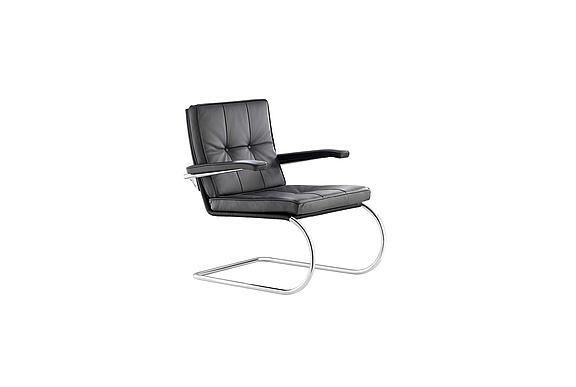
D5A
Lounge chair
Bauhaus Original
Sergius Ruegenberg
1986
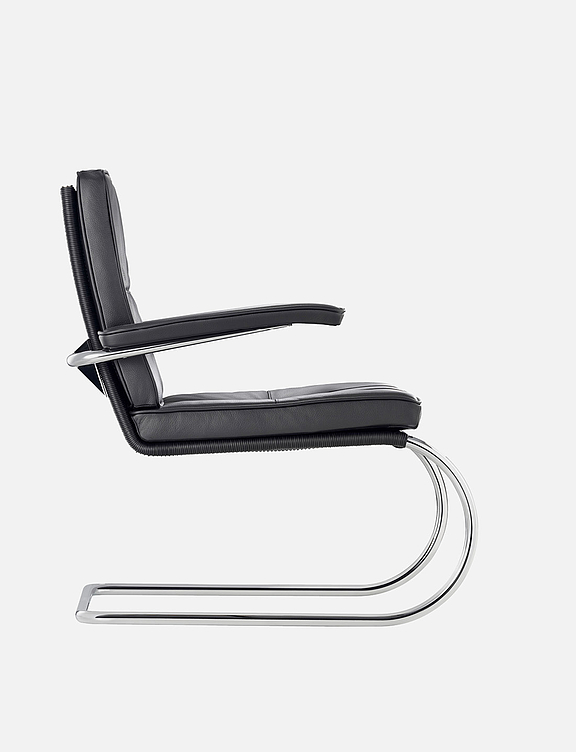
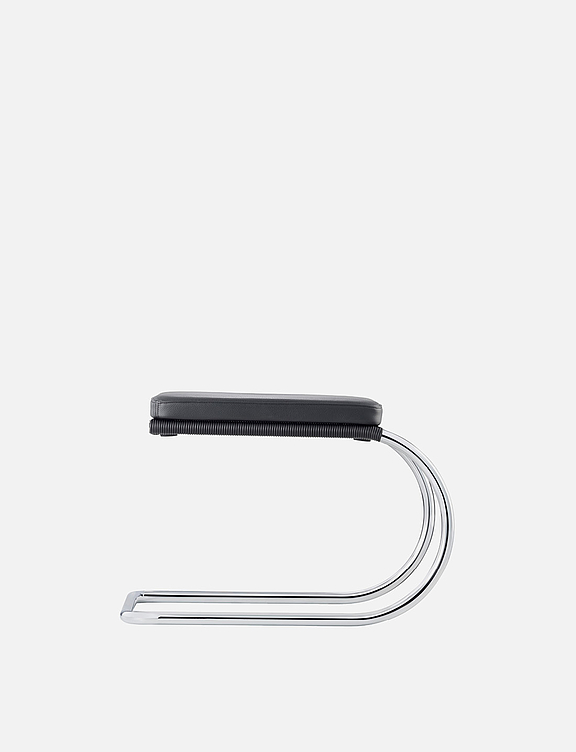
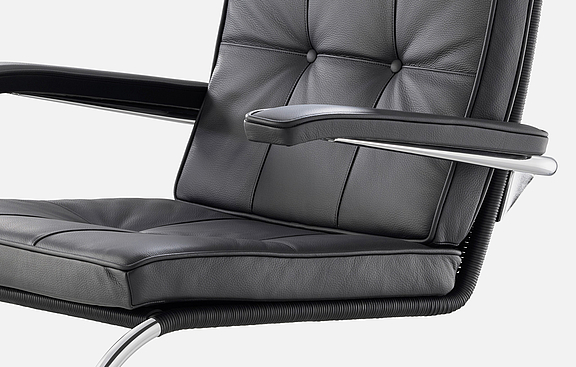
D5A
The Virtuous Chair
Frame
Chromed steel tube
Seating
TECTA-wickerwork, upholstered seat, back and armrests
Dimensions (cm)
Width: 83
Depth: 82
Height: 84
Seat height: 37
In cooperation with Tecta, Sergius Ruegenberg created several special designs in the late 1980s. One of them was Ruegenberg’s armchair, which he himself referred to as the “Virtuous Chair”, combining the studies of the Barcelona Chair and Weißenhof Chair.
Some twenty years later, in 2006, Tecta edited the “Ruegenberg Chair” as model D5, based on its close collaboration with Ruegenberg, some ten years after his death. Axel Bruchhäuser became aware of Sergius Ruegenberg’s role during his research on the cantilever chair without hind legs. Ruegenberg revealed his drawings for a further development of the armchair for Villa Tugendhat, which combined the nickel-plated Weißenhof frame with Lilly Reich’s wickerwork and the Barcelona upholstery to create a new piece of furniture.
“The main virtue of the chair is the secret of its suspension,” explains Axel Bruchhäuser. “Thanks to its long spring arm it is springier than the Weißenhof Chair.” Sergius Ruegenberg and Axel Bruchhäuser both regarded the “Virtuous Chair” as an organic further development of the most beautiful chair of the century.
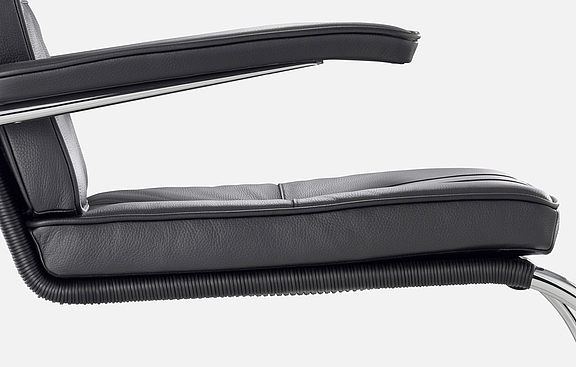
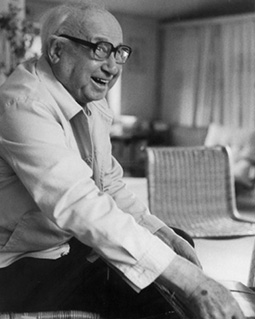
Sergius Ruegenberg, with whom Tecta shared a long relationship, decisively influenced the work of German architects from Bruno Paul to Mies van der Rohe and Hans Scharoun.
Born in St. Petersburg in 1903, the architect Ruegenberg was one of the creative minds in Mies’ office between 1925 and 1934. There he had a major impact on the further development of the most important pieces of modern furniture, such as the cantilever chair developed by Dutchman Mart Stam. Standing on only two instead of four legs, it was later to make design history under the name “Freischwinger”.
“Mies returned from Stuttgart in November 1926 and told us about Mart Stam and his chair concept. We had a drawing board on the wall, on which Mies sketched the Stam chair (...). Ugly, something really ugly, with couplings. If he had at least made it rounder – that would have looked better – and he drew an arc. Just an arc in his hand added to the Stam sketch – that made the chair.” Sergius Ruegenberg told us this at the age of 82 in an unpublished tape recording for the book “Der Kragstuhl” (The Cantilever Chair). A single slip of the wrist produced the most beautiful chair. Ruegenberg himself finished the sketch of Mies’ concept. The springy dynamic and rounded form of the chair, exhibited in the Weißenhof Estate in Stuttgart, have made history until this very day.
But how could such a diverse creative team be successful? “Mies was the architect and head of office. Ruegenberg the charming, artistically gifted partner. He only wanted to do what he was capable of,” Axel Bruchhäuser remembers. Bruchhäuser visited Ruegenberg in 1985 to find out who had really created Mart Stam’s cantilever chair. This encounter gave rise to further investigations, also into the famous Barcelona Chair by Mies van der Rohe, which became an icon due to its cross frame.
“Three days before I was due to depart for Barcelona as a construction manager, Mies requested a design for an armchair,” Ruegenberg wrote to Tecta in 1988. Ruegenberg was neither vain nor seeking his own advantage – he simply wanted to point out that Ludwig Mies van der Rohe hadn’t done everything on his own. Ruegenberg had drawn the Weißenhof Chair based on one of Mies’ ideas, but he had obviously been mainly responsible for designing the famous Barcelona Chair. It was intended for the prestigious pavilion of the German Reich at the world exhibition in Barcelona, the so-called “Barcelona Pavilion”.
On 20 April 1988 Ruegenberg wrote to Axel Bruchhäuser: “The concept of the Barcelona Chair is also contained in the sketches I made based on the stool. But since I left several drawings, it is true that the decision was up to Mies. From these drawings Mies made his selection, a new composition. Please do not correct this, Mr. Bruchhäuser, as it could lead to irritation among the public.”
In cooperation with Tecta, Ruegenberg drew further designs in the late 1980s, including the Ruegenberg Chair, which he also referred to as the “Virtuous Chair”